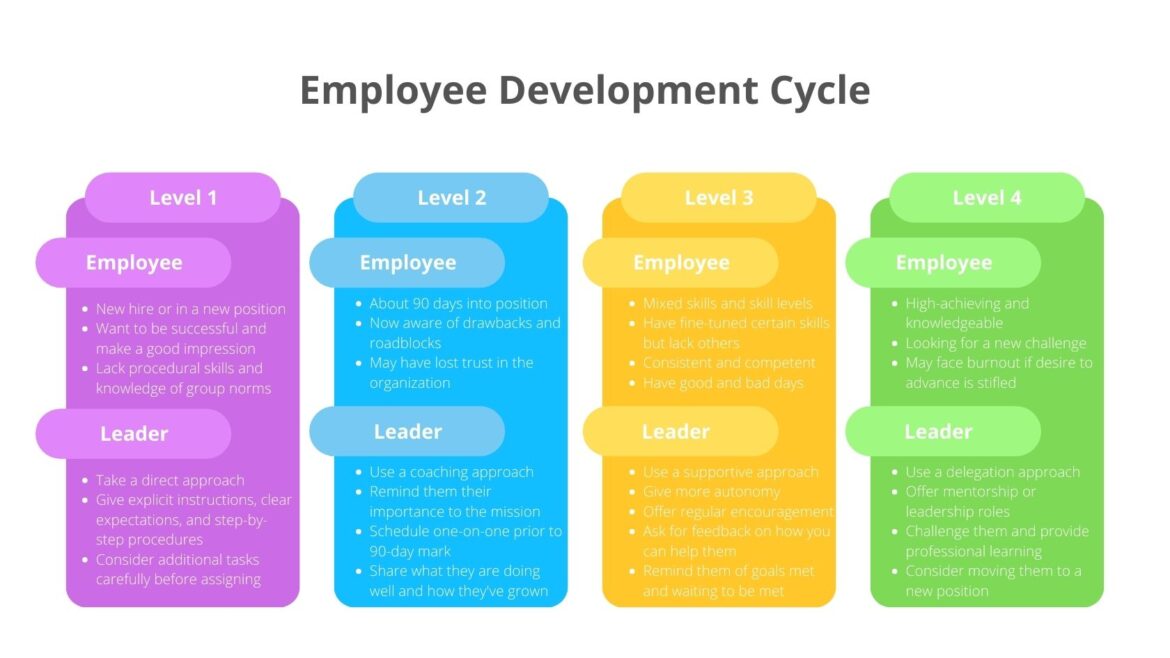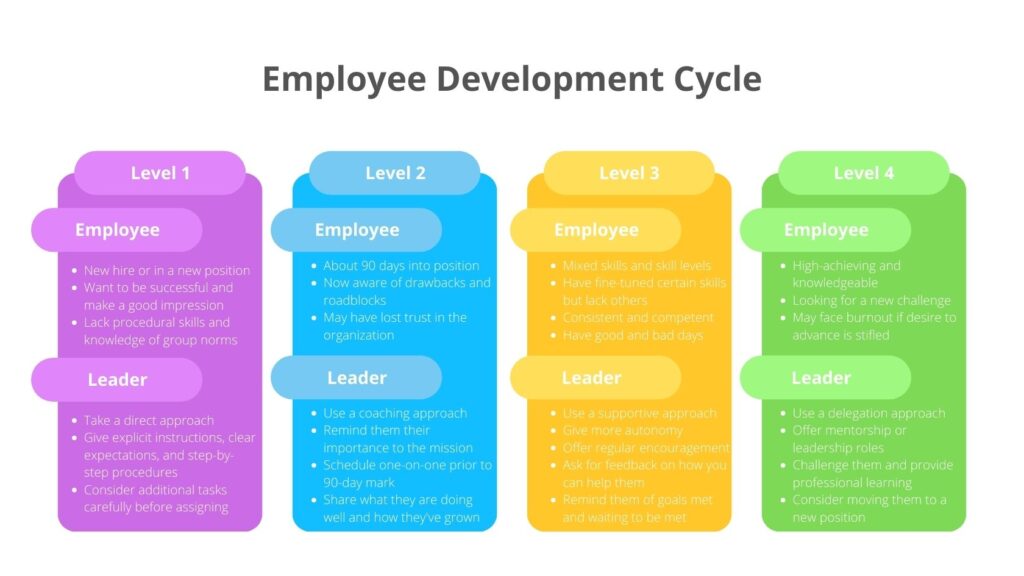One of the key roles of any leader is to foster growth in the people we work with. Recognizing where they are and what they need in order to further develop their skills is critical. As I discussed in a recent blog, a default leader typically provides the same growth opportunities to all employees while an engaged leader differentiates the support provided to staff based on where the individual is in the development cycle. Today, let’s look at the employee development cycle and define what each level requires from an engaged leader.
How People Typically Develop
Dr. Stevie Dawn defines the employee development cycle as having four distinct levels, each of which requires different interactions from the leader in order for growth to happen.

Level 1: Low Skill/High Commitment
Typically, these are new hires to the organization or those new to their position. They are your first-year teachers or those experienced staff who have moved into a different job responsibility. They are excited about new opportunities and really want to be successful. They want to make a great impression on their boss as well as their peers. But they may lack the procedural skills and the group social norms to be completely successful.
An engaged leader helps a Level 1 staff member with a direct approach. Explicit instructions and step-by-step procedures will help them be most successful. This is not the staff member to approach with unclear expectations. Additional tasks outside their new position should be carefully considered before they are assigned as they can become overwhelmed quickly in Level 1 of employee development.
Level 2: Some Skill/Low Commitment
About 90 days into the new position, a Level 1 staff member may become a Level 2 in the employee development cycle. This person has lost some of their excitement about the job and is now much more familiar with the roadblocks and drawbacks of the position. The shine has worn off and they are feeling like they may have made a mistake in taking this role. The road ahead seems dark, and they lack a positive outlook. In addition, they may have lost faith and trust in the organization.
This is a time for the engaged leader to act. Use a coaching approach to remind them of the goal and where the team is headed. Emphasize the importance that they play on the team in reaching that goal. Focus on the mission and provide lots of encouragement.
It’s a good idea to go ahead and schedule some time with these folks before they reach their 90 days so that you can prevent them from getting completely lost. Take note of what they are doing well and how their skills have grown and share that with them and with their peers. Recognize them for how hard they are working and their desire to improve.
Level 3: Variable Skill and Commitment
About 90% of the workforce falls into this category of the employee development cycle most of the time. As a group, they have a mixed bag of skills, having fine-tuned some but ignoring others that are needed. They like some of the tasks that they have to do in their role but dislike others. There are good days for them and bad days, but overall, they are consistent and competent.
A supportive approach is needed for them from the engaged leader. More autonomy in their job should be provided as they have now proven themselves. But encouragement is definitely still needed. Remind them of all that they have accomplished and of the goals still waiting to be met. Ask them for feedback and clarification about their tasks and how you can better help them. Provide them with new opportunities to learn and shine, but continue emphasizing skill development where they are lacking.
Level 4: High Skill/High Commitment
These high-achieving staff members have gained tremendous knowledge and potential and are now looking for a new challenge. They want to move up in the organization. If this desire to advance is stifled, they may face burnout and the development of a negative outlook.
With them, the engaged leader should use a delegation approach. Have them serve as mentors or senior leaders; give them leadership roles in committees or projects. Or move them into a completely new position, thus putting them back at Level 1 with new opportunities and challenges. Challenge them, but also be sure to provide the professional learning they will need to be successful.
How well the engaged leader individualizes their approach to employee development can determine whether the organization reaches its goal or not. So, think about each of your team members and where they are in the cycle. Then schedule a time to meet with each one and follow the approach recommended.


